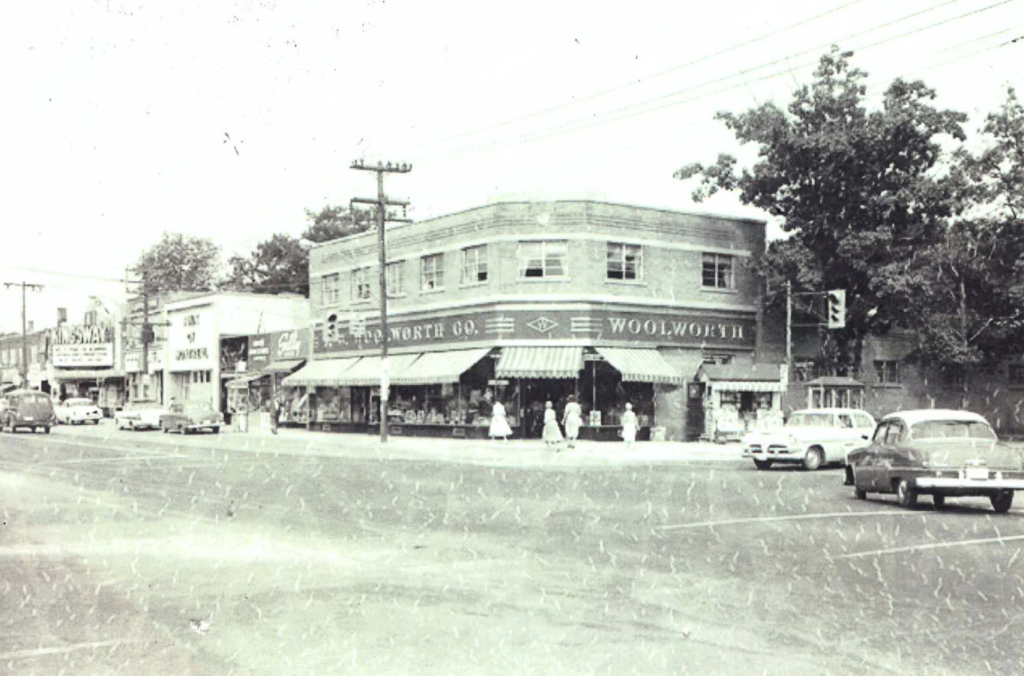
The Kingsway BIA is Celebrating its 50th Anniversary

The Kingsway Business Improvement Area (BIA) is celebrating its 50th anniversary this year. Established in 1973, the Kingsway BIA is one of the oldest BIAs in Toronto. The Kingsway BIA is a dedicated organization that represents the thriving business community in the Kingsway neighbourhood. The BIA’s main goal is to promote and enhance the commercial, cultural, and social life of the Kingsway and its residents.
The Kingsway is one of the most popular neighbourhoods in Toronto known for its beautiful tree-lined streets, upscale homes, and boutique shops. The Kingsway BIA has been instrumental in helping maintain the Kingsway’s unique character and community values. Let’s take a closer look at the incredibly rich history of the Kingsway neighbourhood and how the BIA was formed.
The origins of the Old Mill
The story of the Kingsway starts all the way back in 1793 when John Graves Simcoe, the first Lieutenant Governor of Upper Canada, ordered the construction of a saw mill on the west bank of the Humber River. Called the King’s Mill, it was Toronto’s first industrial building, providing lumber for ships and government buildings.In the subsequent decades, a series of devastating fires and floods destroyed a number of stone mills built on that site.
In 1847, William Gamble purchased the King’s Mill and erected a new grist mill on the plot of land. Unfortunately, another fire caused by the mill’s wood-burning stove destroyed it once again in 1881 and the building remained abandoned for several decades.As steam power became more popular in the late 19th century, the Humber Valley, which was known for its mills, began transitioning into an area for leisure and relaxation.
Robert Home Smith’s vision for the Kingsway
The idea for creating residential neighbourhoods along the Humber River initially came from local business man Robert Home Smith. Between 1906 and 1912, Home Smith acquired thousands of acres of land on both sides of the Humber River, from Eglinton Avenue to Lake Ontario.This land was split up into 5 subdivisions called Riverside, Bridge End, Baby Point, the Old Mill, and the Glebe. The Glebe was renamed Kingsway Park and then later just the Kingsway.
Home Smith was infatuated with all things pertaining to England. For his newly acquired land, Home Smith wanted to build a neighbourhood following English Garden City principles, which embraced holistic planning and looked to enhance the natural environment.
Home Smith had a set of very precise rules when it came to his new neighbourhood. All homes in the Kingsway Park neighbourhood had to be architect-designed in a Tudor or English style. The plans for these new houses had to be approved by one of Home Smith’s own architects. In addition, trees could not be removed from the community without permission in an attempt to maintain the neighbourhood’s strong connection with nature. Houses could only be built with stone, stucco, or brick exterior walls. In the early years of the neighbourhood, no home-based businesses were permitted, except doctors and dentists.
World War I stalled the plans for Kingsway Park but the first two houses were eventually built in 1924. The initial group of houses built in the Kingsway were massive, many of which are considered mansions by today’s standards. After the market crash of 1929, Home Smith realized that the neighbourhood had to provide more affordable housing options, so the sizes of the homes built in the following years were much smaller than the initial group. Between 1924 and 1947, a total of 665 homes were built in Kingsway Park.
The Kingsway continues to be one of the most popular neighbourhoods in Toronto with the demand for housing in the area going up every year. If you are looking to move to the Kingsway neighbourhood, consider renting a self-storage unit in Etobicoke to help alleviate some of the stress on move-in day.
Businesses arrive to the Kingsway
To encourage sales, Home Smith often provided amenities in his subdivisions, such as a golf course and a riding stable. The first of these amenities was the Old Mill Tea Garden Restaurant, founded by Home Smith in 1914. Built next to the ruins of an old grist mill on the Humber River, the Old Mill quickly became a popular destination for locals and tourists alike. Over the years, the building was expanded and converted into a hotel and restaurant.
Today, the Old Mill is still a popular destination for visitors to the Kingsway. The hotel features 57 guest rooms and suites, each one featuring luxurious amenities and period-appropriate décor. In addition to the hotel and restaurant, the Old Mill also has a full-service spa, offering a range of treatments and services to help guests relax and unwind. The Old Mill celebrated its 100th anniversary in 2014.
In the early 1930s, Home Smith set aside lots on the north side of Bloor Street between Prince Edward Drive and Montgomery Road. These lots were called Kingsway Park Business Sites and would provide shopping, banking, and other services to the residents of Kingsway Park. The neighbourhood’s first store opened in 1933 on the corner of Bloor and Grenview as Carman Mainprize’s Drugstore. It was a huge development for the neighbourhood and it lead the way for many more stores to be opened on the North and South side of Bloor Street. Today, this area along Bloor Street is home to some amazing shops and businesses, along with some of the best restaurants in the Kingsway.
The Kingsway Theatre
One of the most important businesses that started around this time was the Kingsway Theatre. When the Kingsway Theatre opened in 1939, admission was 10¢ for children and 20¢ for adults to see films in what was deemed at the time as a “modern picture palace.” For over 80 years the Kingsway Theatre has been a fixture of the community offering residents and visitors a unique and memorable movie-going experience. Despite its age, the Kingsway Theatre has kept up with the times, offering movie-goers a wide variety of films, from Hollywood blockbusters to indie gems to foreign films. The theatre also hosts special events and screenings, including classic movies, live performances, and Q&A sessions with filmmakers and actors.
The founding of the Kingsway Business Improvement Area
From the opening of the first store in 1933, businesses have thrived in the Kingsway neighbourhood. The Kingsway Business Improvement Area (BIA) began as the Kingsway Business Men’s Association in 1949. The organization was designed to help support local businesses and enhance the overall commercial life of the neighbourhood. On December 3, 1973, the Council for the Borough of Etobicoke passed a by-law establishing the Kingsway Business Improvement Area and creating a Board of Management.
Over the years, the BIA has worked tirelessly to attract new businesses, promote local events, and support local charities. The BIA has also worked to beautify the neighborhood by planting trees, installing benches, and improving the streetscape. The Kingsway BIA has also been instrumental in promoting local events. The BIA hosts a number of events throughout the year, including the Taste of the Kingsway. This event is held in early September each year has grown to become South Etobicoke’s largest street festival attracting over 200,000 people in 2019. The festival not only brings awareness to the amazing businesses and organizations in the Kingsway but it also helps raise funds for local charities such as Out of the Cold, the St. Joseph Health Centre Foundation, the Gatehouse and Campfire Circle – a non-profit oncology camp that supports kids and families affected by childhood cancer.
Conclusion
As the Kingsway BIA celebrates its 50th anniversary, it is important to recognize the vital role that it has played in the development of the Kingsway neighbourhood. The BIA has been a leader in community development and has helped make the Kingsway one of the most desirable neighbourhoods in Toronto. The Kingsway BIA’s achievements over the past 50 years are a testament to the hard work and dedication of its members and their commitment to making the Kingsway a great place to live, work, and visit.